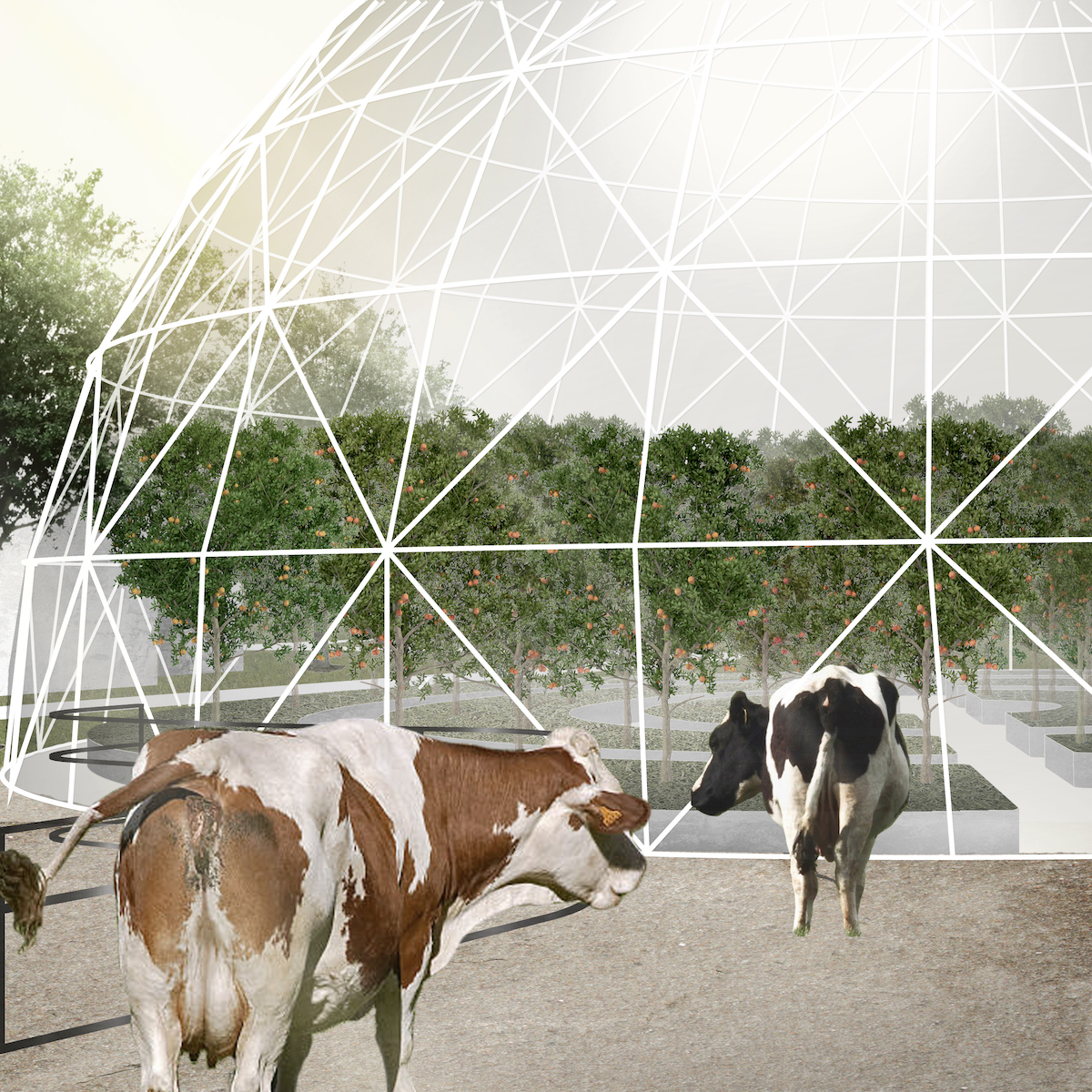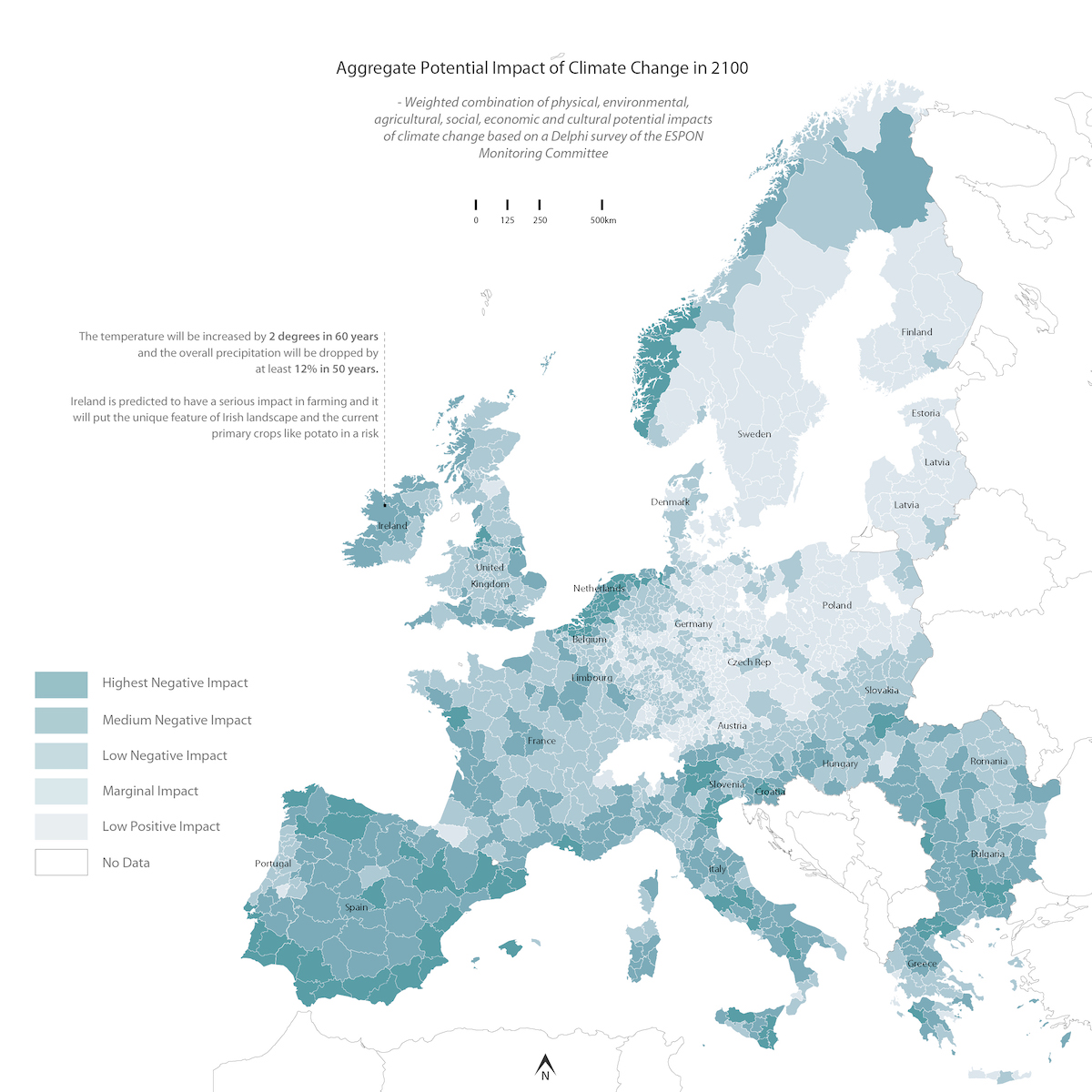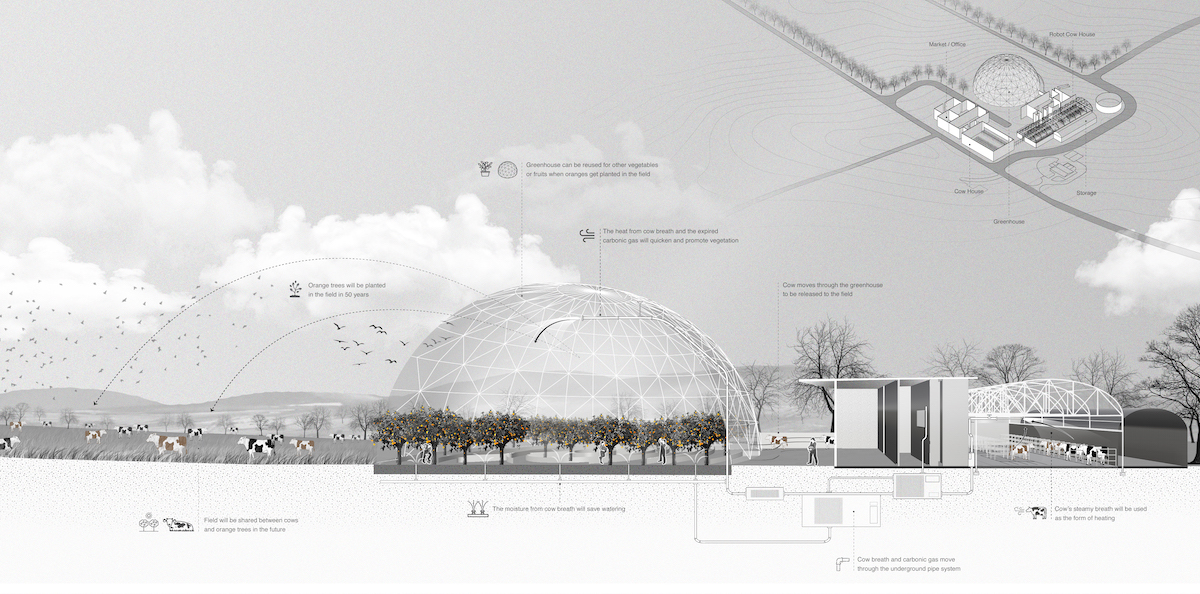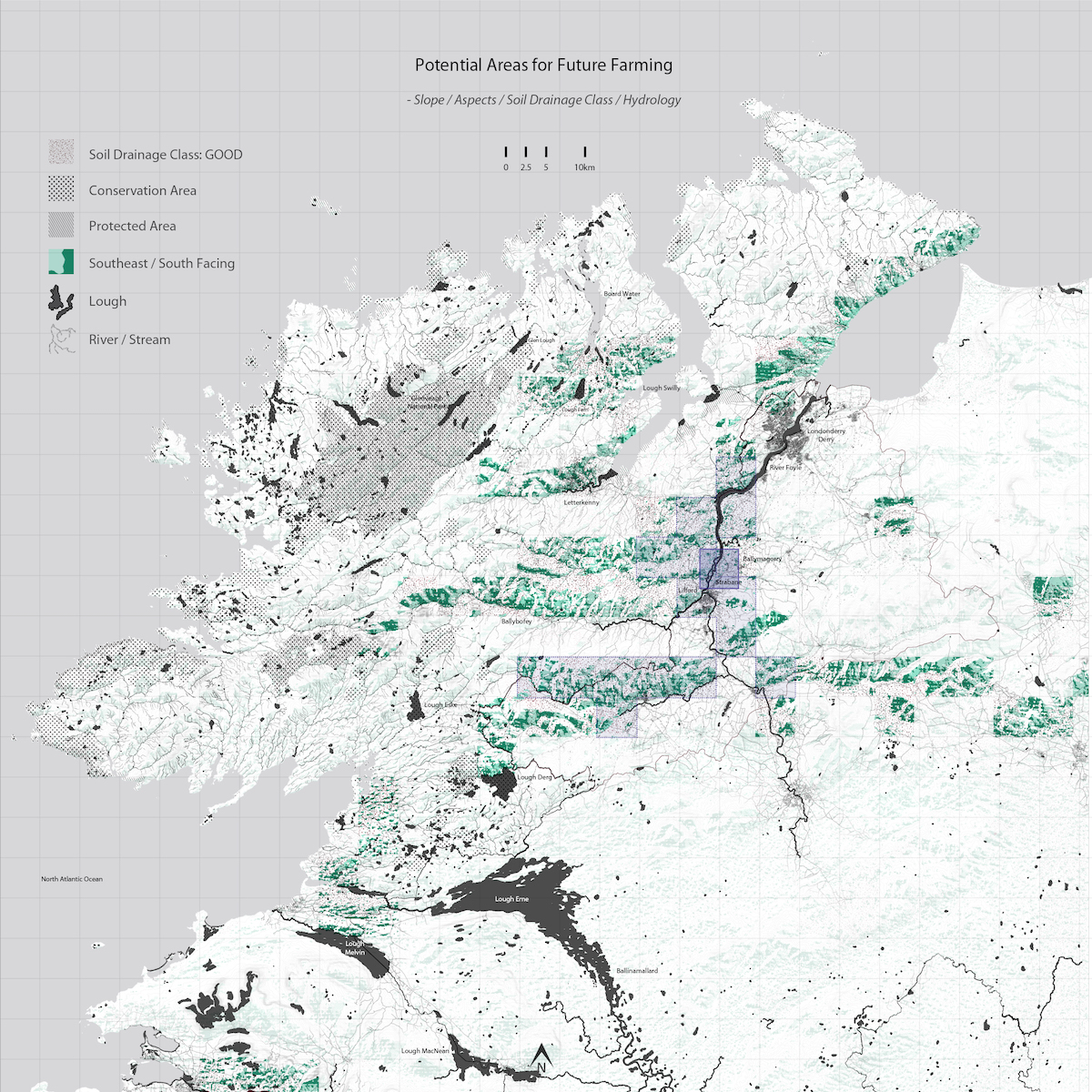At The Dinner Table — Green to Orange: Building Ireland’s food security and identity

By Jiyun Jeong (MLA ’19)
Food reveals the culture and identity of the place. What and how people grow on the land constructs the landscape and what people consume shapes their identity and health. This study focuses on Irish farming and its relation to the Irish landscape, not only in the context of Brexit but also engaging with climate change. The current Irish landscape contributes in a major way to Ireland’s sheep and cattle farming. However, what if the Irish landscape becomes no longer green and placed at risk due to climate change?
The development of agriculture has moved away from crop growing to animal farming. Currently, dairy has become a specialized type of farming and less than 3% of Irish farmers grow vegetables and fruits. However, Ireland is predicted to be seriously impacted by climate change and it will put the unique feature of the Irish landscape and its current primary crops, like potatoes, at risk. In terms of Brexit, the deal could have a major impact on Irish fruit and vegetable importers and wholesalers, meaning shortages and higher prices for consumers.
This indoor landscape system would allow farmers to test and grow new potential species in preparation for climate change. One existing farm in Strabane is selected as a testbed since this farm has already started embracing new technology and innovative systems for farming. Cows’ steamy breath will be used as a form of heating and expired carbonic gas will quicken and promote vegetation. Moreover, the moisture from cow breath will save watering and the waste from cows will be reused as a form of fertilization. Oranges in the greenhouse will eventually come out to the field when the climate gets suitable in 60 years. The indoor landscape system will be reused for other species in future adaptations. This project will eventually establish Ireland’s food security and change their dinner table.


